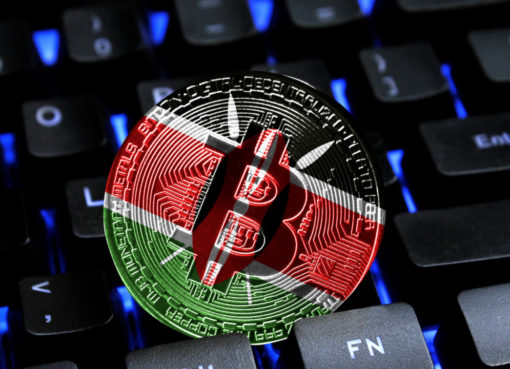This year has been like no other. A global health pandemic, multiple stock market shocks, the destabilizing of the workforce and many sectors of the economy. After a year of living with COVID-19, consumer and investor behavior has taken on new characteristics as digital and sustainable business and finance have taken off in parallel.
At a moment like this, emerging technologies such as tokenization and blockchain technology are more relevant than ever – and have been presented with a profound opportunity. As traditional markets are in crisis, investors are seeking refuge in cryptographically sound currencies, propelling bitcoin to new all-time price highs. Meanwhile, alternative asset classes such as ESG (environmental, social and corporate governance) investments have gained ground amongst investors, crossing $1 trillion in funds for the first time on record.
This post is part of CryptoX’s 2020 Year in Review – a collection of op-eds, essays and interviews about the year in crypto and beyond. Mohammad Raafi Hossain is co-founder and CEO of Fasset, a crypto exchange in the Middle East.
As we continue to witness new highs in the digital asset and ESG markets, it is time to consider whether these two growing sectors have the potential to benefit and support one another.
As impact investments and ESG-friendly funds increase in popularity, the cryptocurrency community has an opportunity to capture some of this momentum through the use of tokenization technology. By leveraging investor appetite for these asset classes, it may be possible to accelerate the maturation of the digital assets sector, along with the acceptance of asset-backed tokens and other digital assets in more traditional financial circles.
Impact investing
Arguably one of the fastest-growing asset classes, ESG investments are expected to reach half of all investor portfolios by 2025, totaling $35 trillion. This is partially the result of more investors recognizing ESG-friendly assets as an effective hedge against volatility and downside risk – with some 69% of investors crediting them as such, according to a State Street survey.
While ESG funds saw record flows in 2019, investor activity has been accelerated by the COVID-19 pandemic. This effect has been compounded by climate crises, socioeconomic seachanges and protest movements across numerous major economies, leading to greater attention to the ways in which companies are doing business and where capital is being placed.
The newfound appetite for ESG investments is good news for society at large. As the world faces widening socioeconomic gaps and unemployment across the world, impact investing could play a prominent role in mitigating these challenges. Investments into transportation infrastructure, for example, can create over 21,000 jobs with every $1 billion invested. Considering these sizable socioeconomic externalities, this asset class could play a vital role in shaping the recovery and future of the global economy.
An uphill battle
Unlocking these potential benefits does not come without challenges. On average, there is an annual need for investments of $6.9 trillion into sustainable infrastructure between 2016 to 2030 to meet the United Nations’ Sustainable Development Goals (SDGs). As public bodies and governments struggle to fund this development, the funding gap for these projects is expected to hit $15 trillion by 2040. This means that private capital will be increasingly required to plug the gap.
However, where private investments are concerned, there are numerous barriers to entry to the sustainable development investment market from low levels of liquidity, large ticket sizes and a lack of optionality, to high overhead and entry costs and limited transparency. Faced with these significant market imperfections, investors could benefit from the deployment of digital assets and tokenization as promising solutions to the ESG sector’s problems.
The world faces widening socioeconomic gaps and unemployment across the world and impact investing could play a prominent role in mitigating these challenges
Spanning the physical, financial and digital worlds, tokenized ESG investments, such as wind or solar farms, could provide sustainable infrastructure asset owners with new avenues for capital accumulation to fund developments of such projects. Similarly, through the tokenization of ESG-friendly investments, issues surrounding market access, lack of liquidity and prohibitively high costs and fees for investors would be overcome seamlessly.
As these assets become more liquid, accessible and tradable. Investors seeking to diversify their portfolios with low-risk, highly-resilient assets would be drawn to the digital assets space, potentially converting traditional financial actors to cryptocurrency market participants.
A mutual benefit
Currently, decentralized finance (DeFi) is the fastest-growing pocket within the crypto space, creating tremendous incentives and traction among retail and institutional investors. While DeFi has often been characterized by innovative on-chain solutions, some critics have pointed out there has been limited “real-world value” generated as a result of ongoing experimentation.
While tokenization technologies stand to substantially benefit the ESG community, they could also serve the purpose of bringing real, off-chain, substantive value to the digital assets market in the form of tokenized sustainable infrastructure. As ESG-friendly investments increase in popularity and prove extremely appealing to traditional finance, tokenized impact investments could serve as a vehicle for greater crypto adoption and digital assets’ acceptance in institutional and political circles.
Right now, we are faced with a profound opportunity to bring digital assets to mainstream financial actors. There is an opportunity for the crypto sector to leverage the rise of ESG to its advantage, adding value to both the ESG sector and accelerating the maturation of the crypto space.
Looking ahead, there is no denying that the digital assets and impact investing spaces will play roles in shaping jobs, industries and the economy post-pandemic. But whether or not both industries can help foster mutual growth is yet to be seen.




